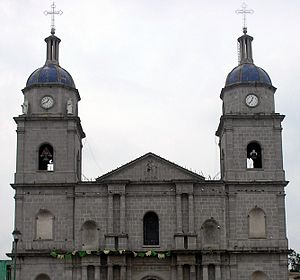Gastronomy
Cuaxala
This dish is a kind of salty atole, a thick soup with a doughy consistency that is cooked in chicken soup, guajillo chilies, tomatoes, lard or oil, and fresh oregano. Added on top is shredded chicken meat, it is served in a mud bowl (similar to clay). It is an exquisite meal that is served especially for lunch.
"Tacos de la estacion" Literally Tacos from the (train) station, also known as Tuxpan's Tacos)
Tuxpan is well known for its tacos that are often sold at the railroad station, during the height of national train travel, Tuxpan was a stop between Colima and Mexico City where many passengers would buy these tacos. Today they are sold at the side of the station and down the street V. Carranza. These tacos consist of a corn tortilla made by hand that is covered by a sauce and stuffed with a piece of beef and pork cooked with spices, or it may be made with beans or potatoes.
This page is based on this
Wikipedia article Text is available under the
CC BY-SA 4.0 license; additional terms may apply.
Images, videos and audio are available under their respective licenses.




